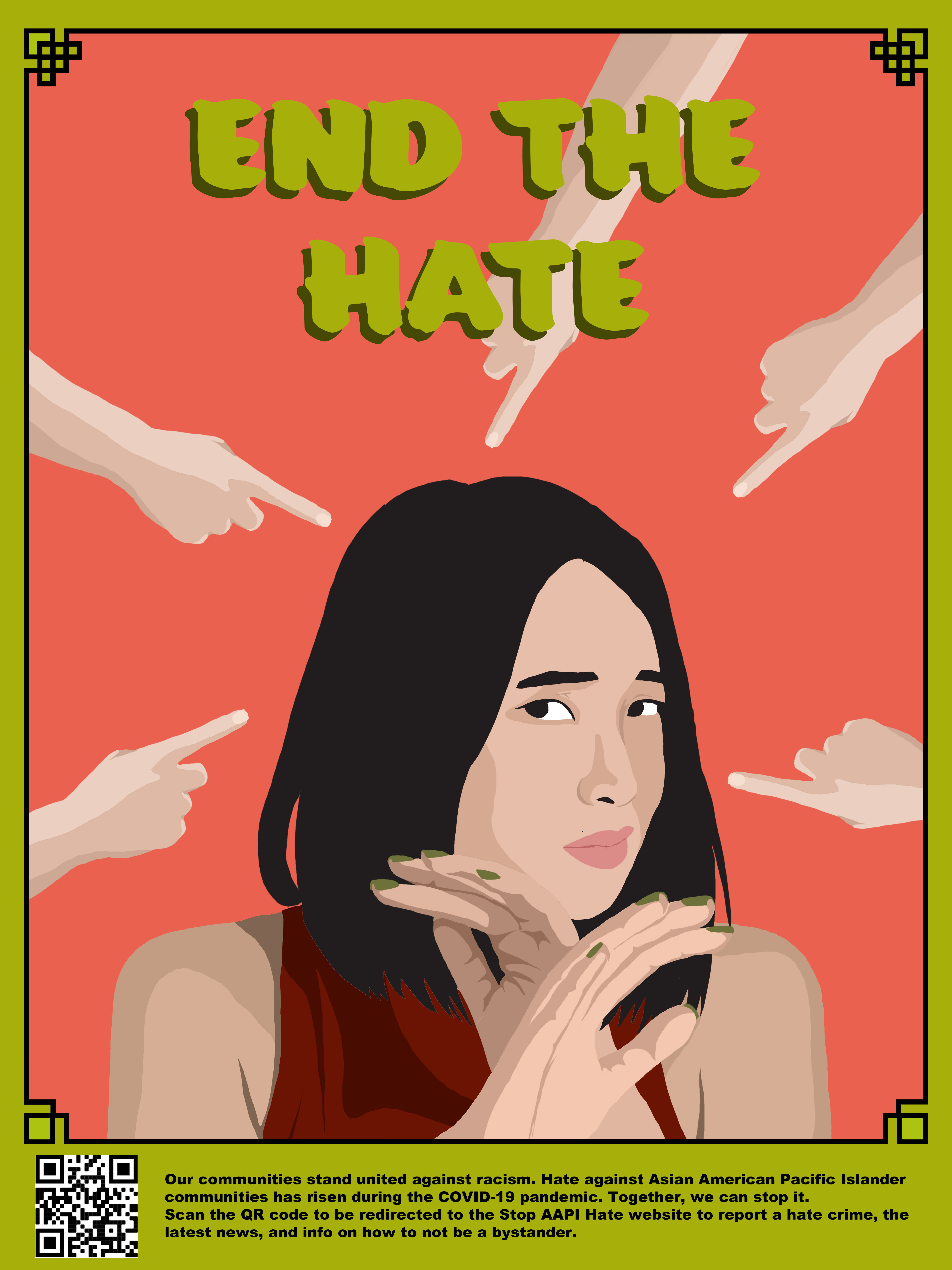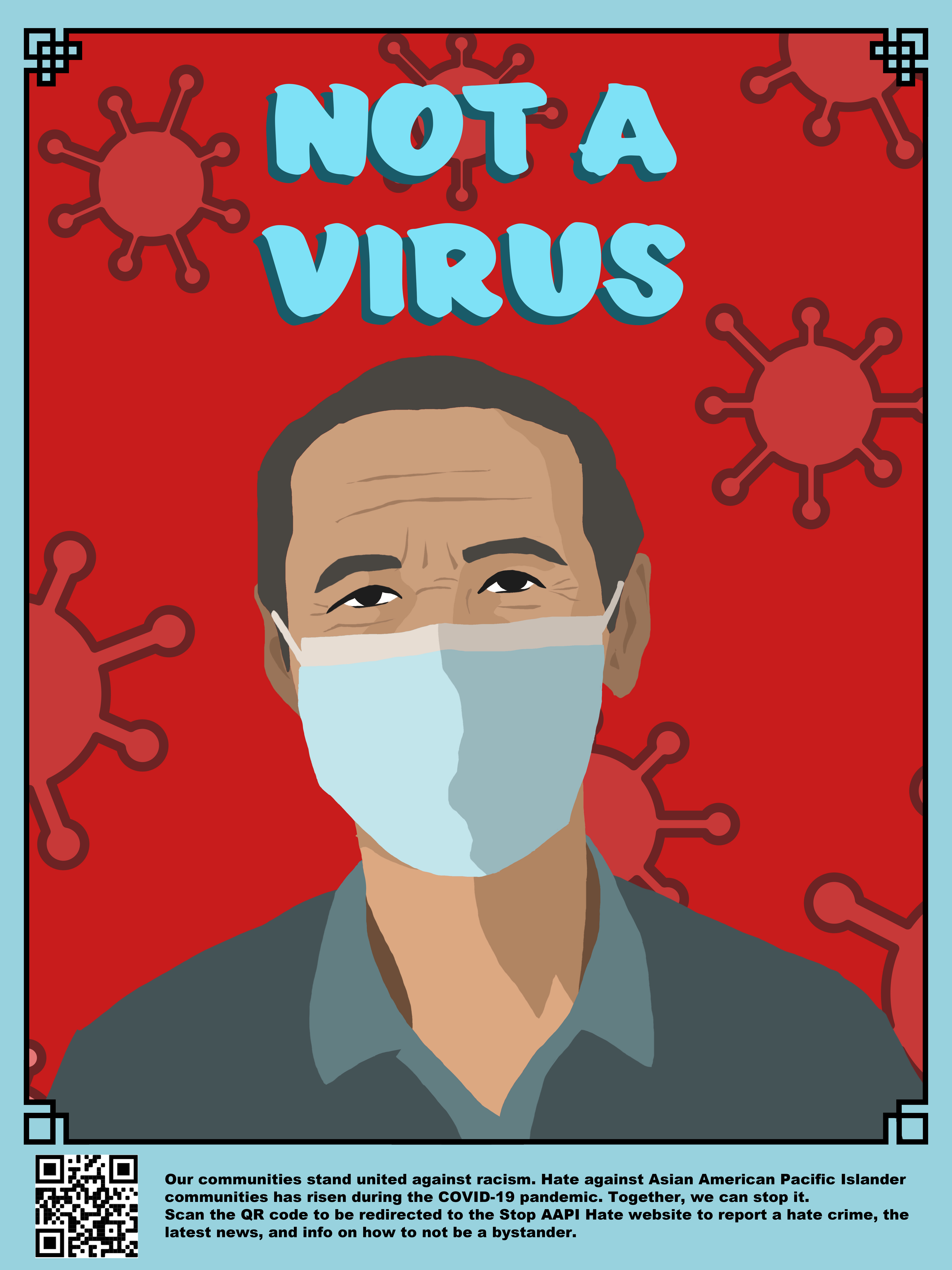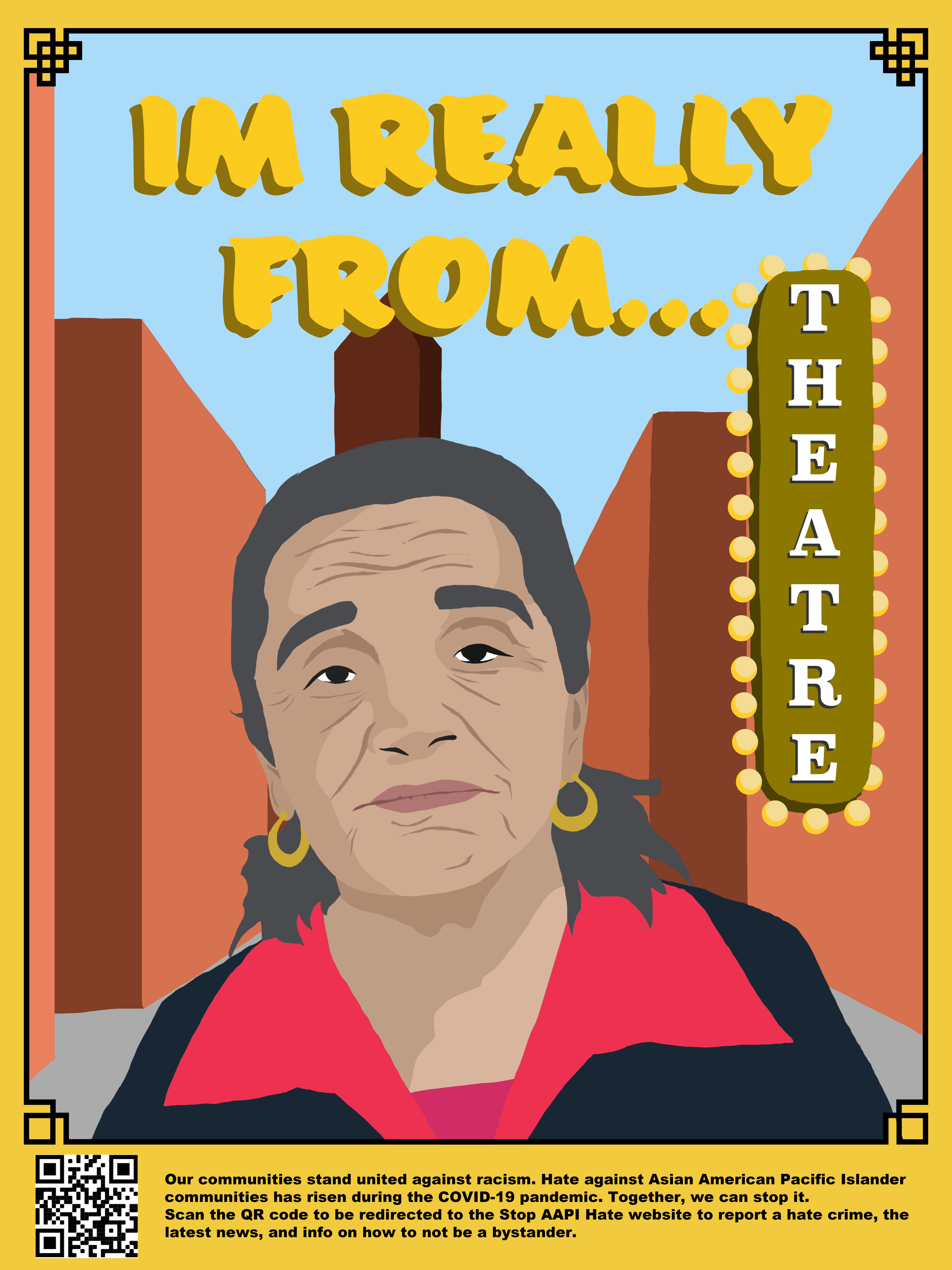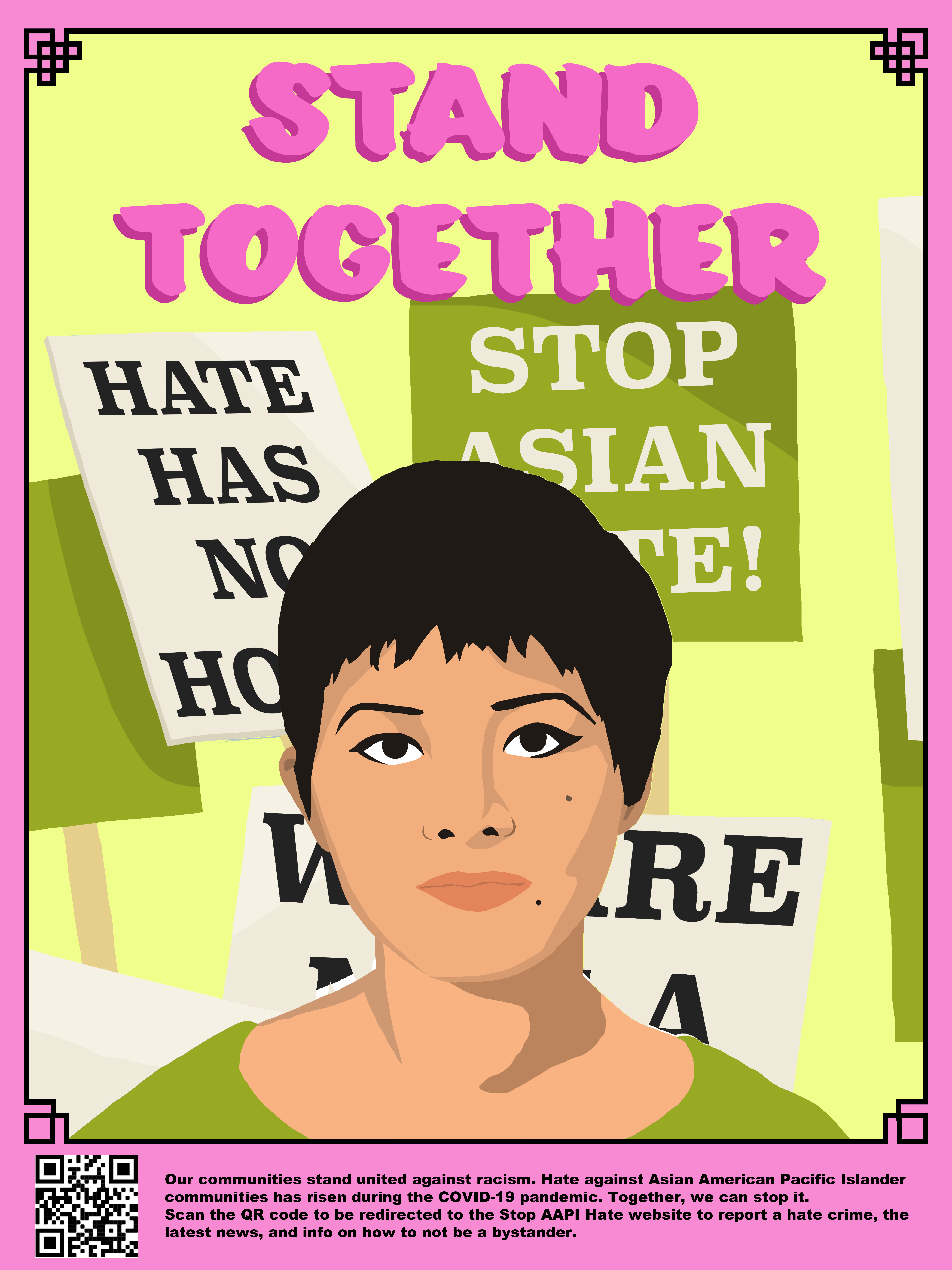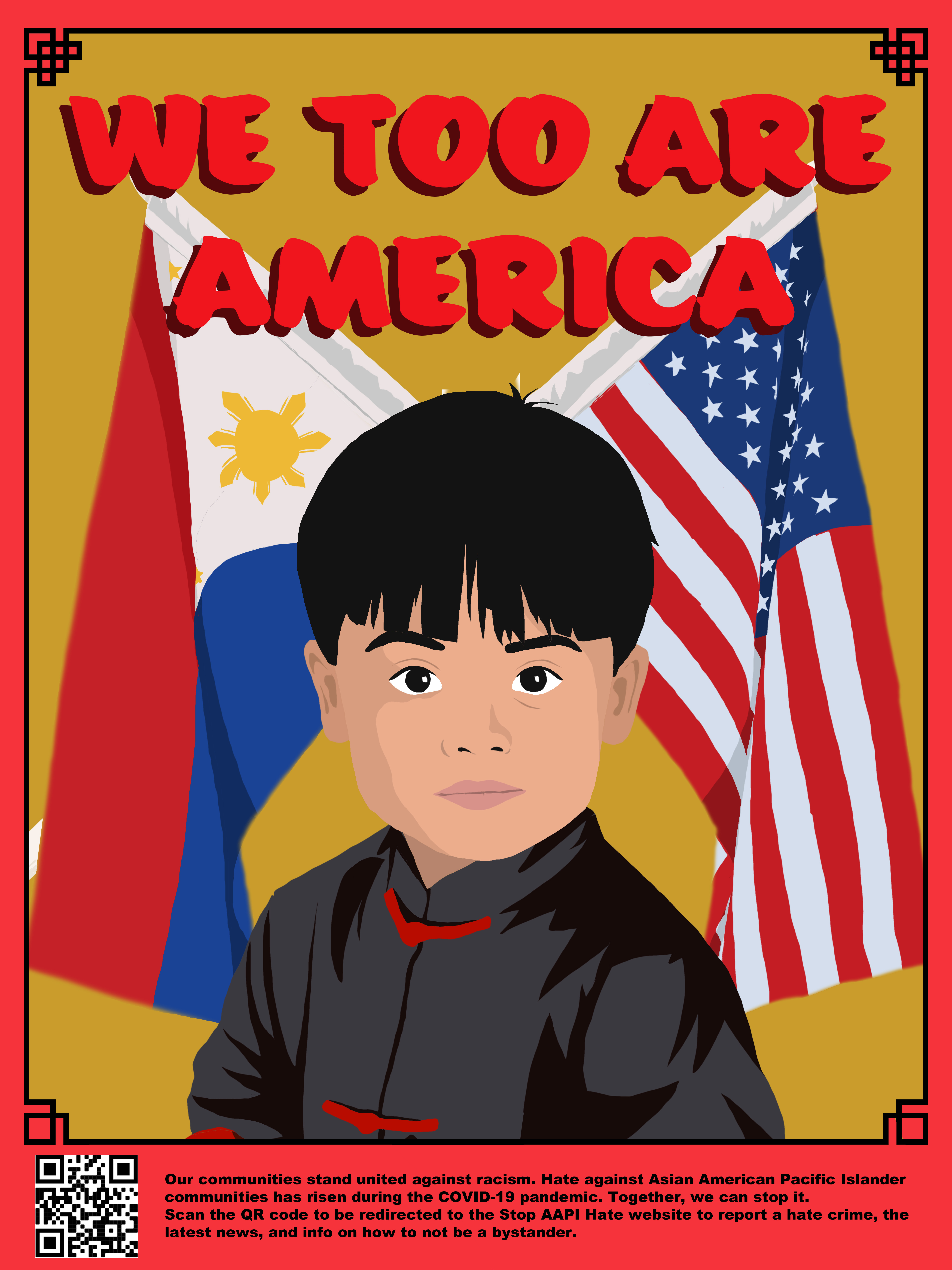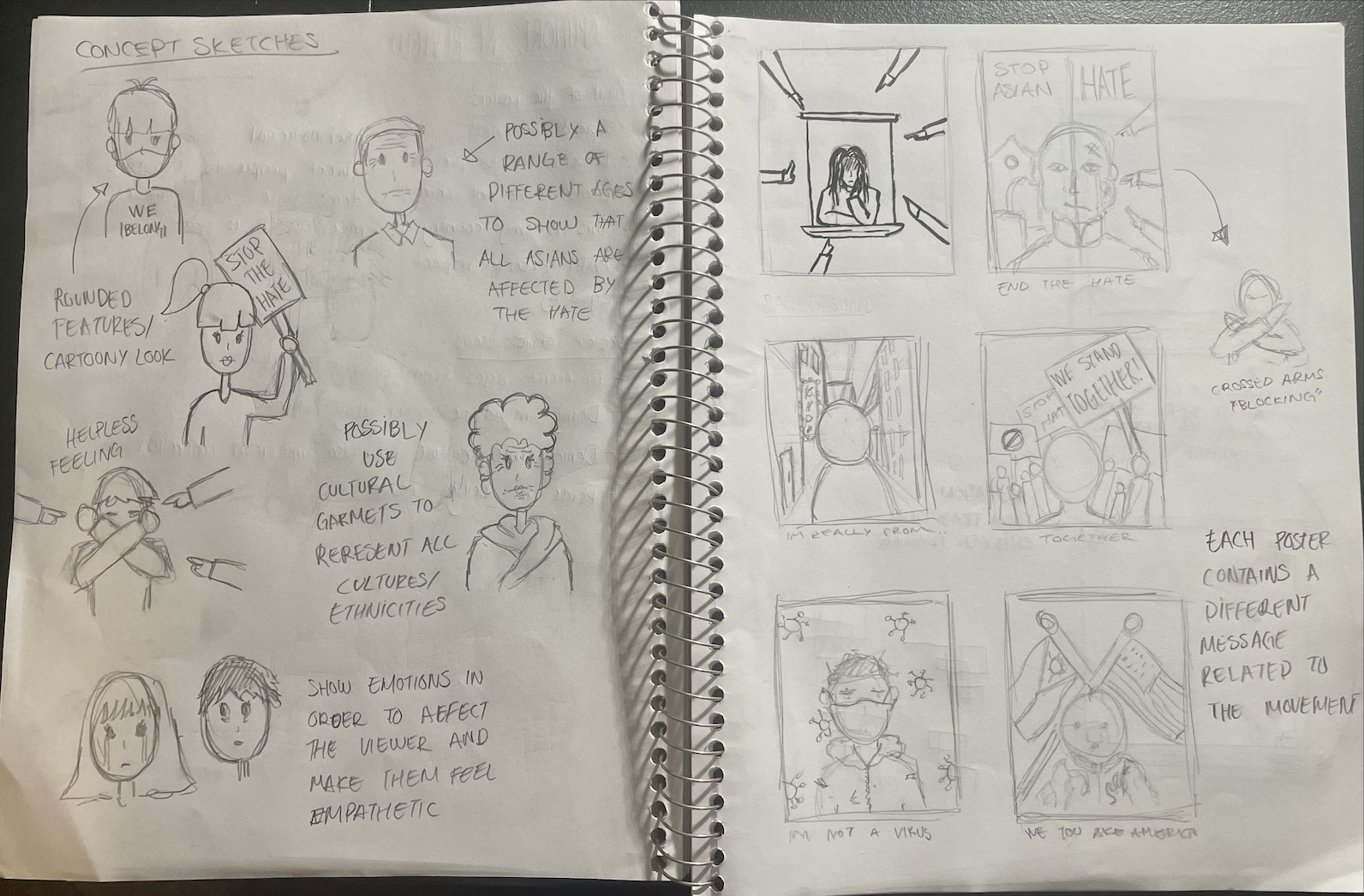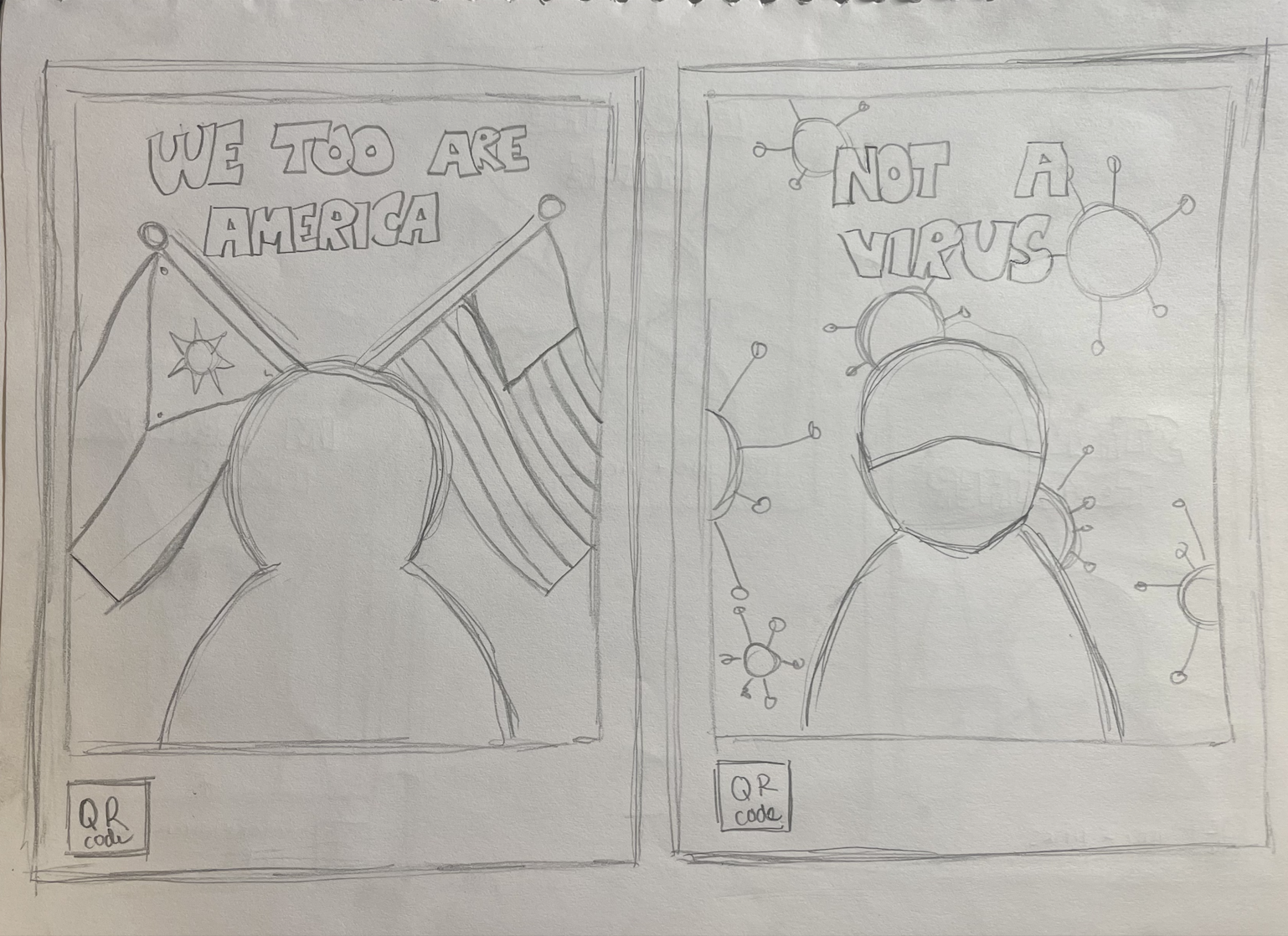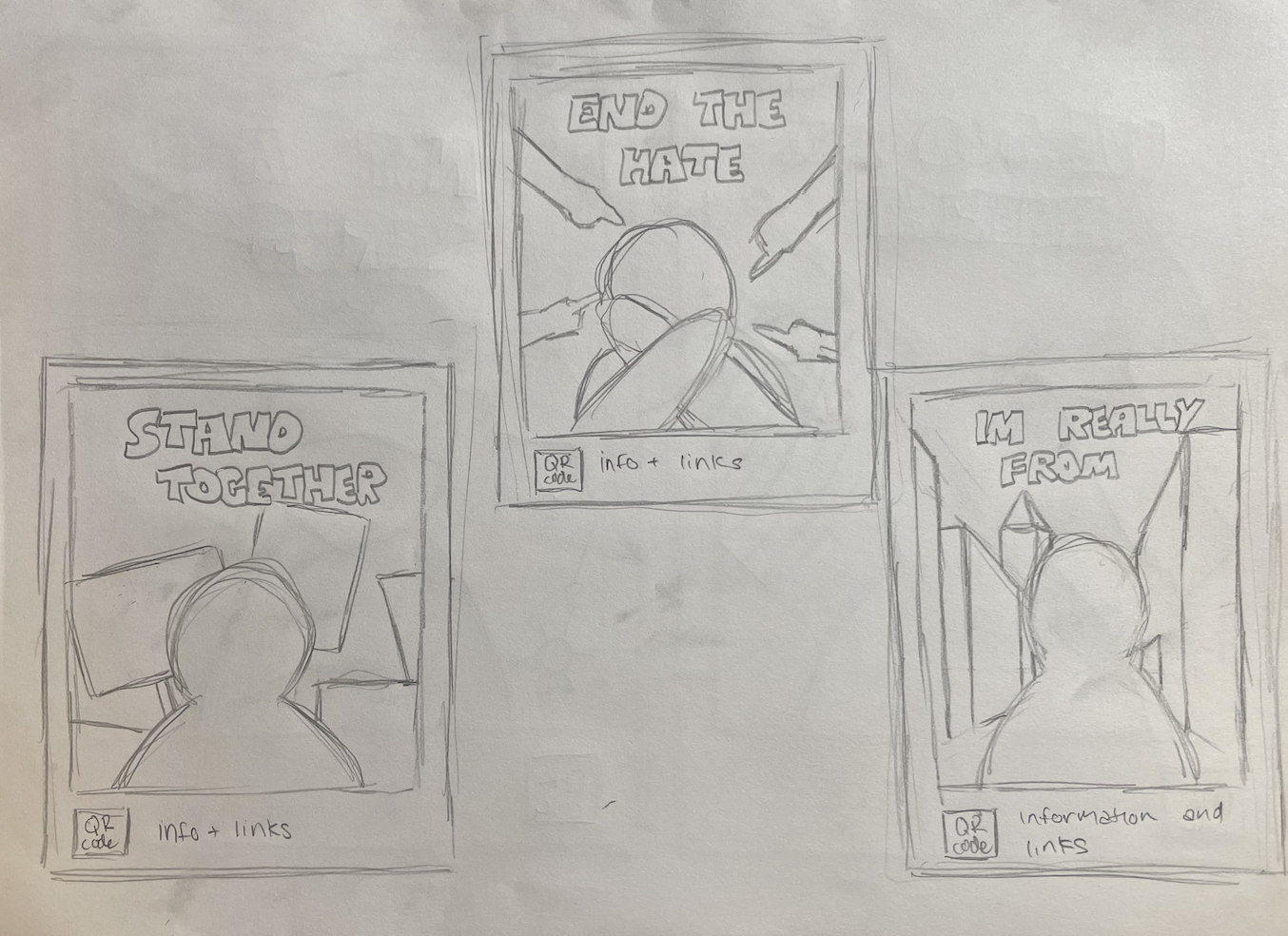To build on this series, the next phase could involve community engagement initiatives that pair each poster with a short video or audio testimonial from individuals featured or represented. A traveling exhibition or outdoor installation in schools, public transit systems, or cultural centers could broaden impact. Additionally, an educational toolkit could accompany the visuals, helping teachers and facilitators lead discussions around racism, bystander intervention, and the historical context of AAPI discrimination. Collaboration with local artists, students, and activists would further root the work in community voice and participation.

